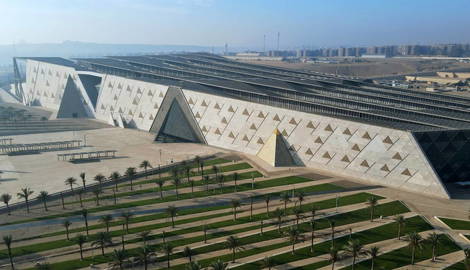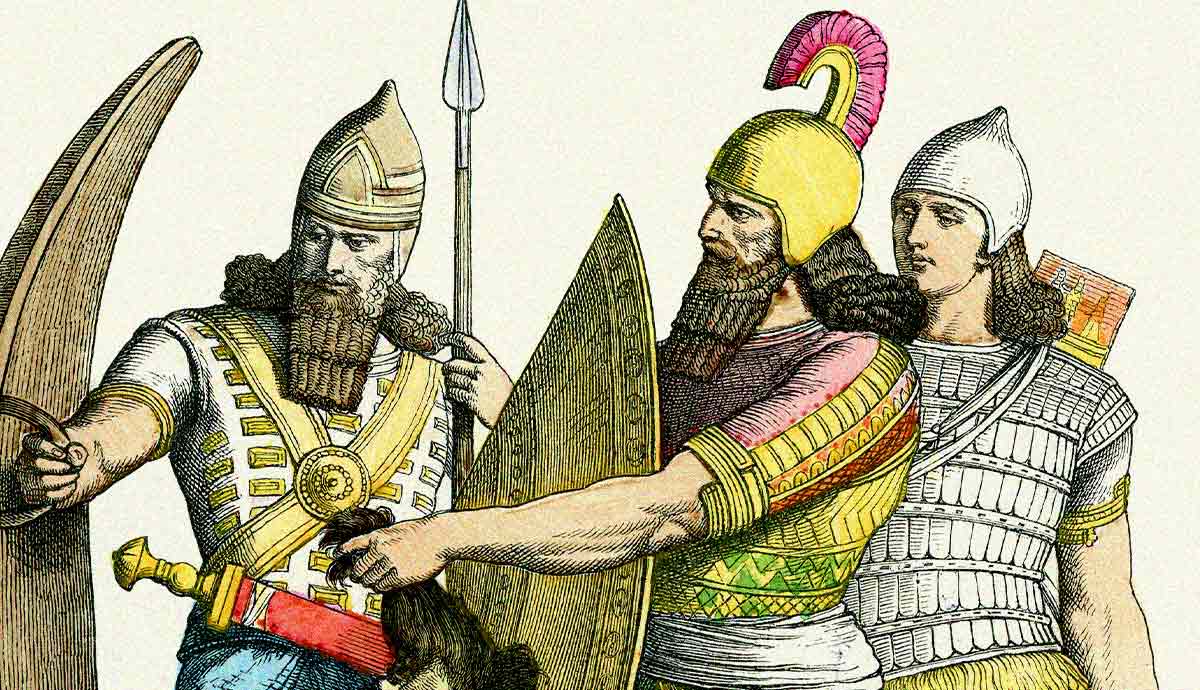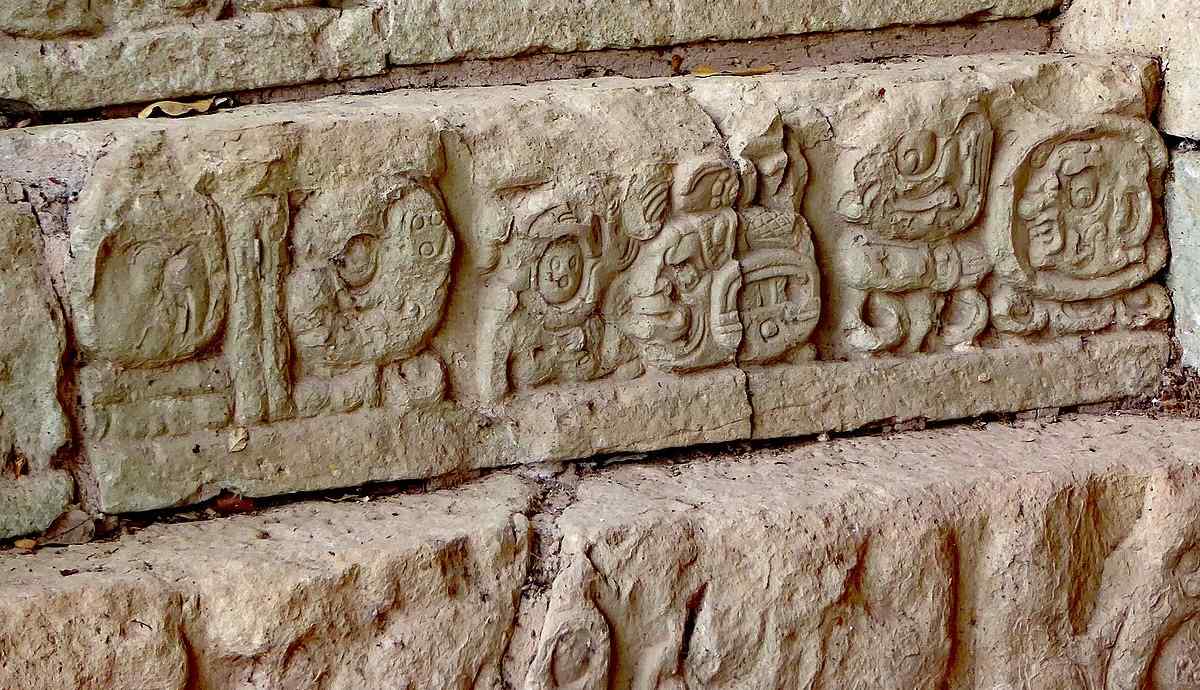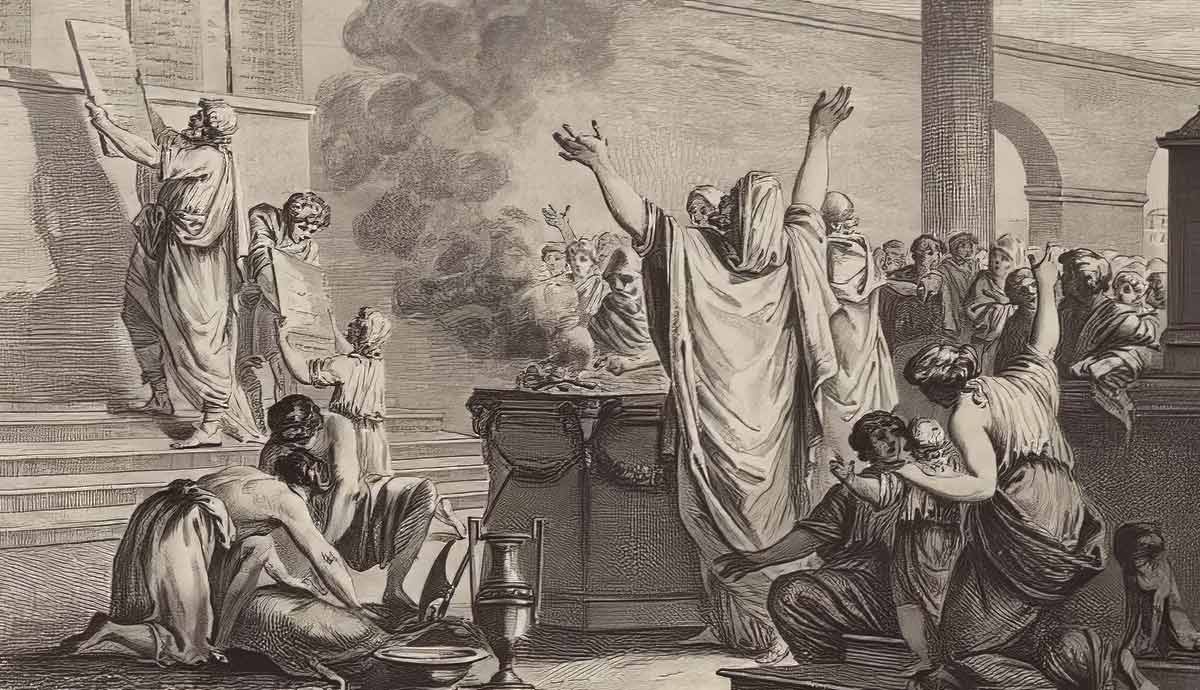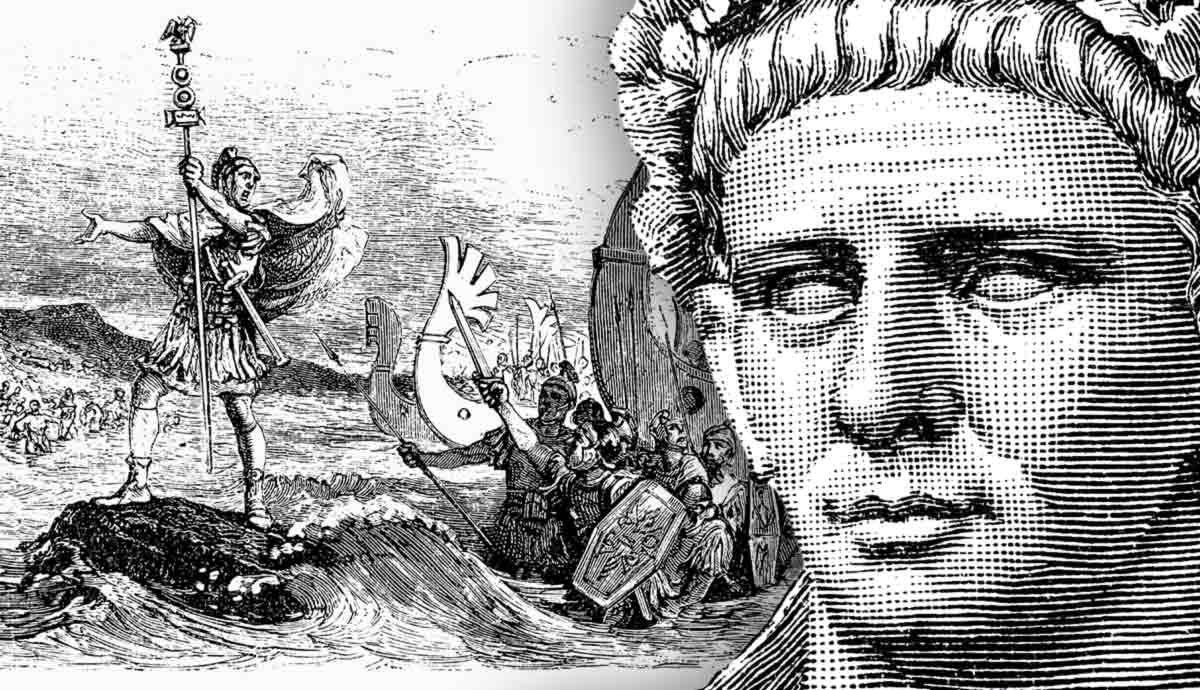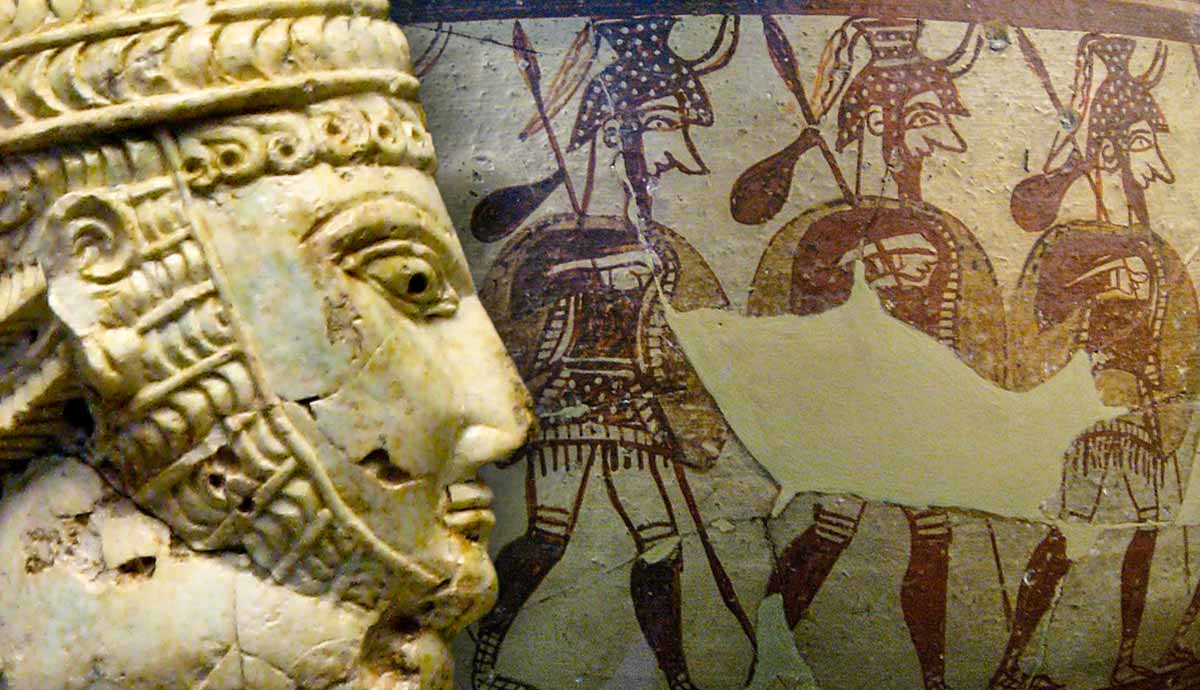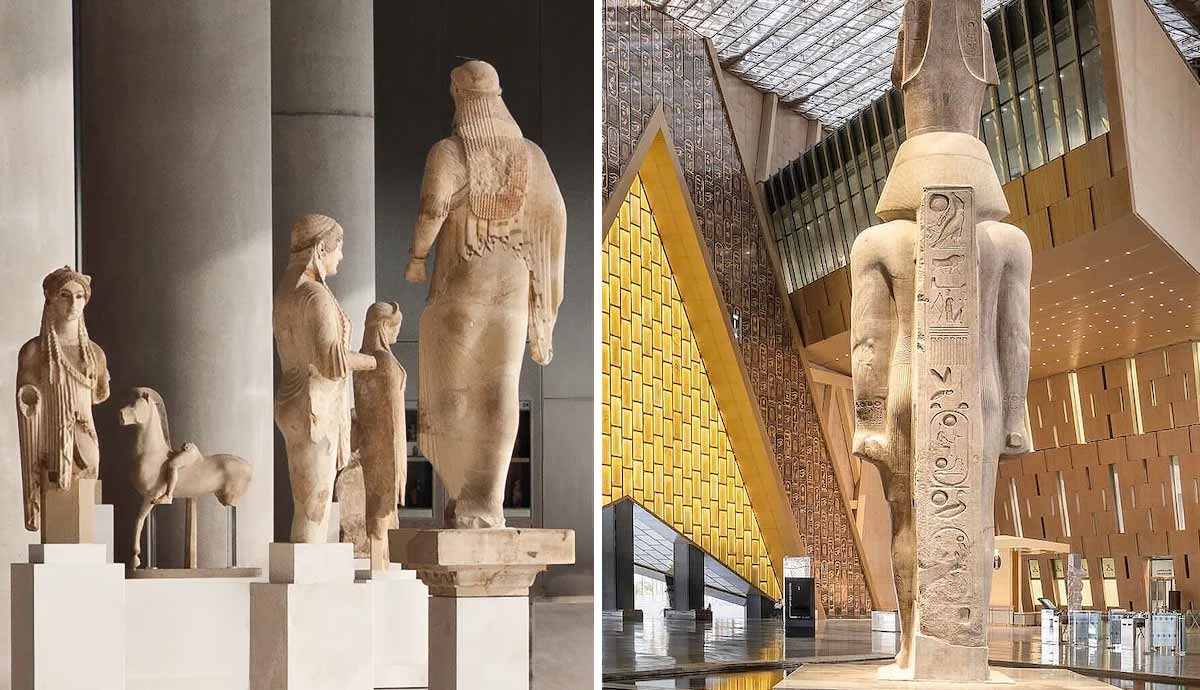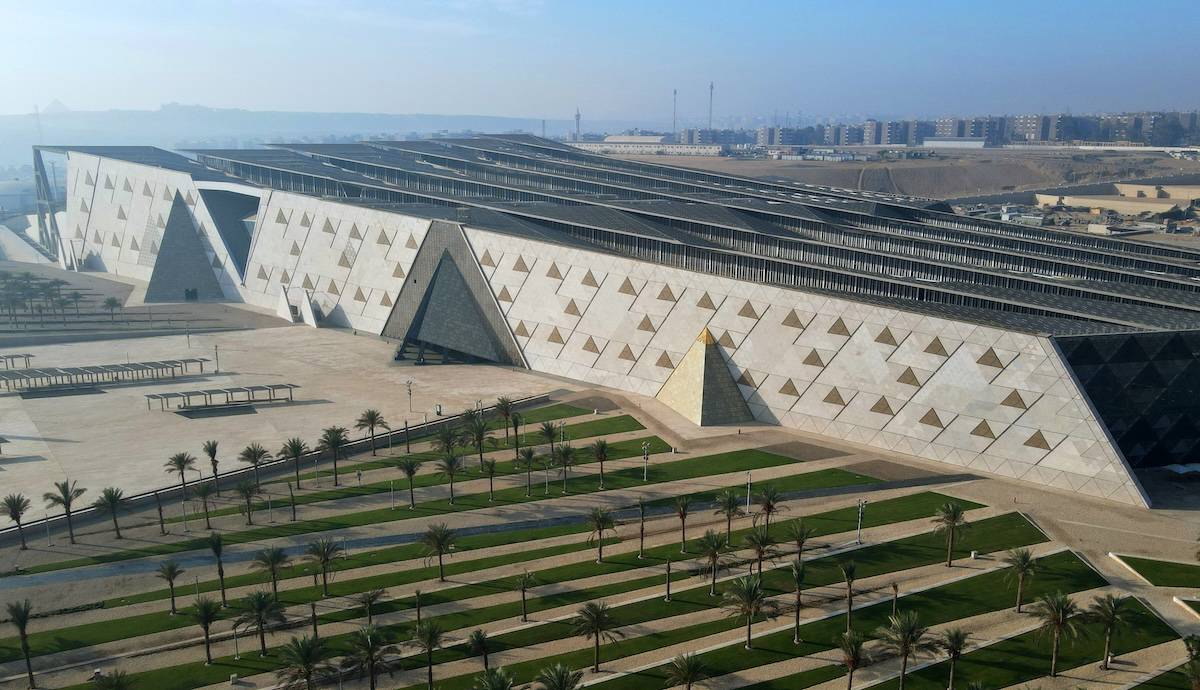
The Grand Egyptian Museum (GEM) presents 5,000 years of Egypt in one walkable narrative on the Giza plateau. Opening fully in November 2025, the world’s largest museum devoted to a single civilization unites 100,000+ artifacts, the complete Tutankhamun assemblage, and visible conservation labs inside a building aligned with the pyramids. For historians, the GEM delivers scale, context, and method in a single visit.
5,000 Years of History at the Grand Egyptian Museum
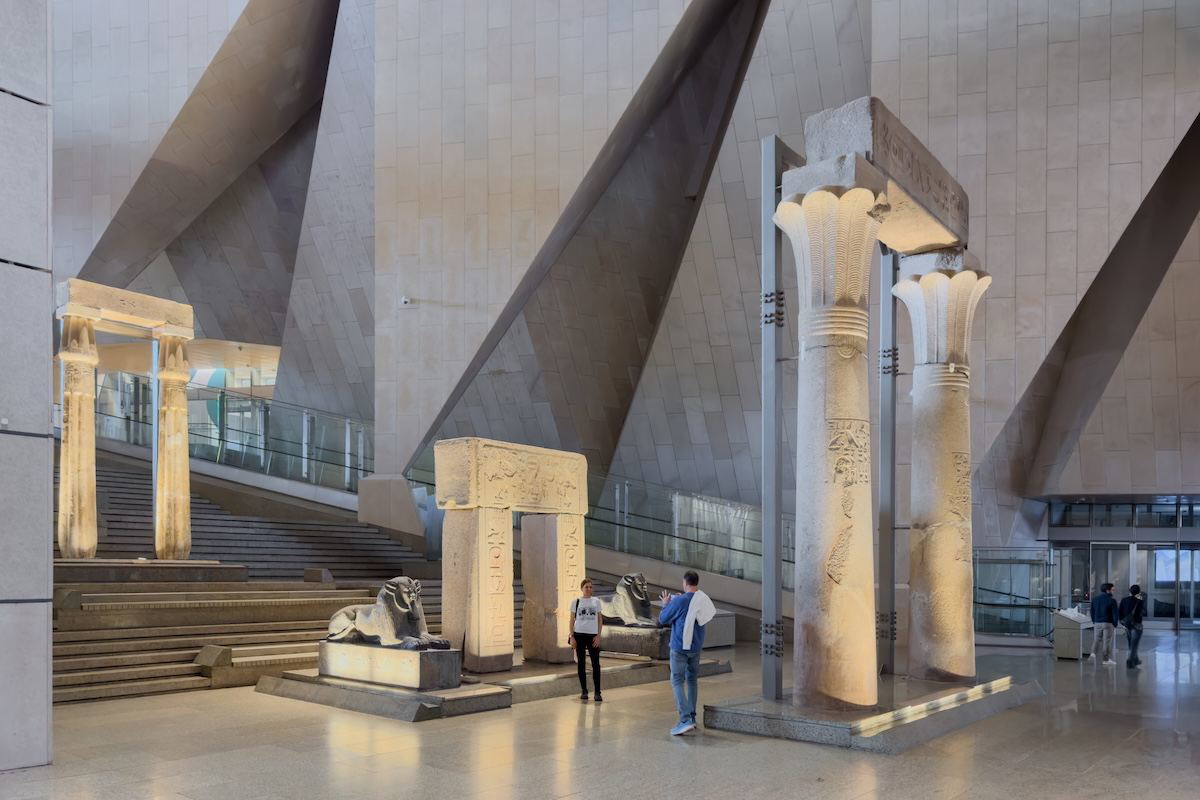
The GEM’s galleries span Egyptian history from the Predynastic Period through the Coptic era. Displays are organized both chronologically and thematically to trace continuity and change across the Old, Middle, and New Kingdoms and beyond. At the heart of the GEM, the six-story Grand Staircase serves as a narrative spine for millennia of Egyptian history, with ten striking statues of an enthroned King Senusret I anchoring the ascent.
Every Tutankhamun Object Together at Last
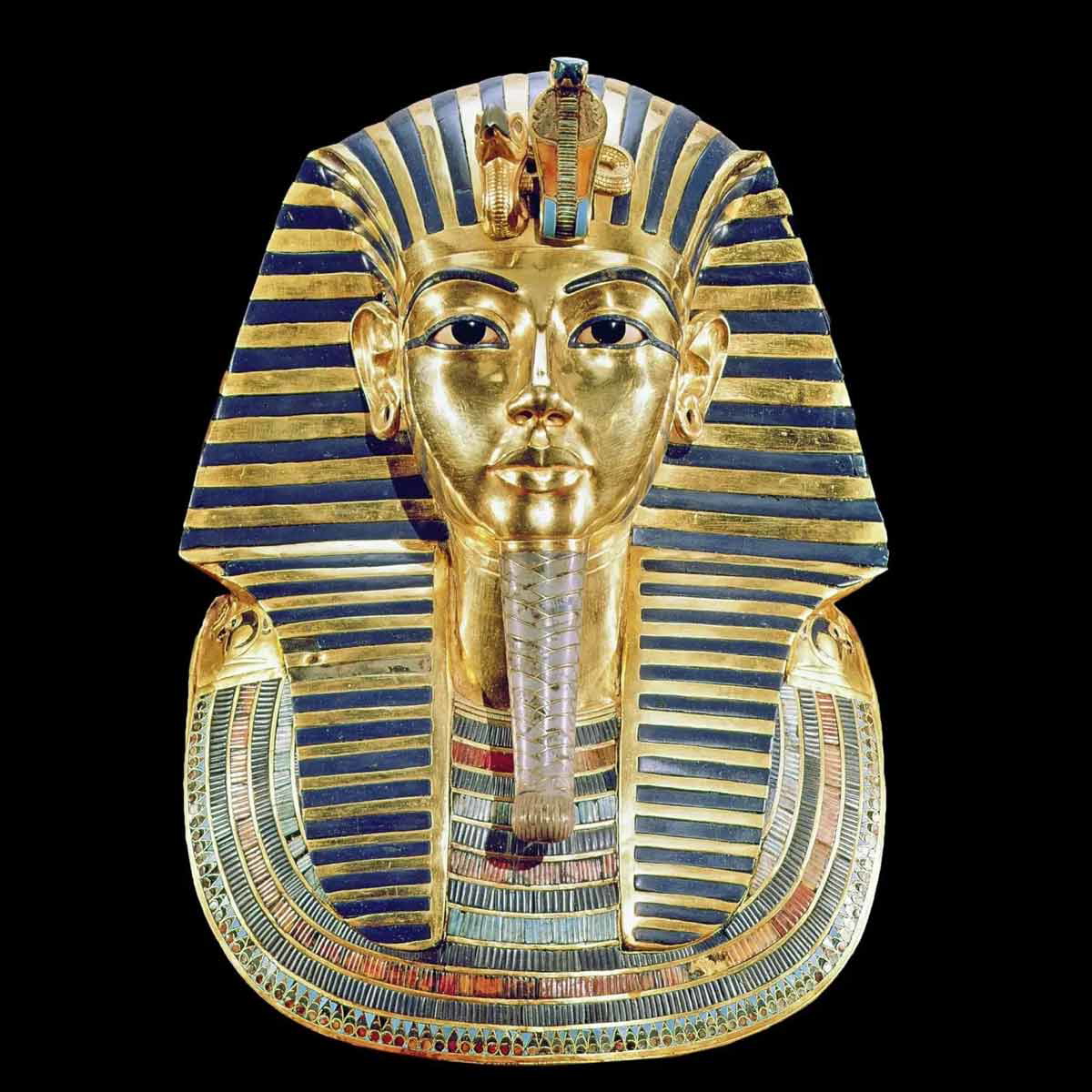
For the past century, Tutankhamun’s story has been told through a handful of artifacts at a time. At the GEM, the entire tomb assemblage, comprising over 5,000 treasures, appears together for the first time since its discovery in 1922. King Tut’s trove preserves the most complete New Kingdom royal burial on record, from sandals and linen to chariots, shrines, weapons, and furniture. The GEM Tutankhamun gallery is a fascinating map of 18th-Dynasty craft and cultural exchange.
Conservation and Research: Methods on Display
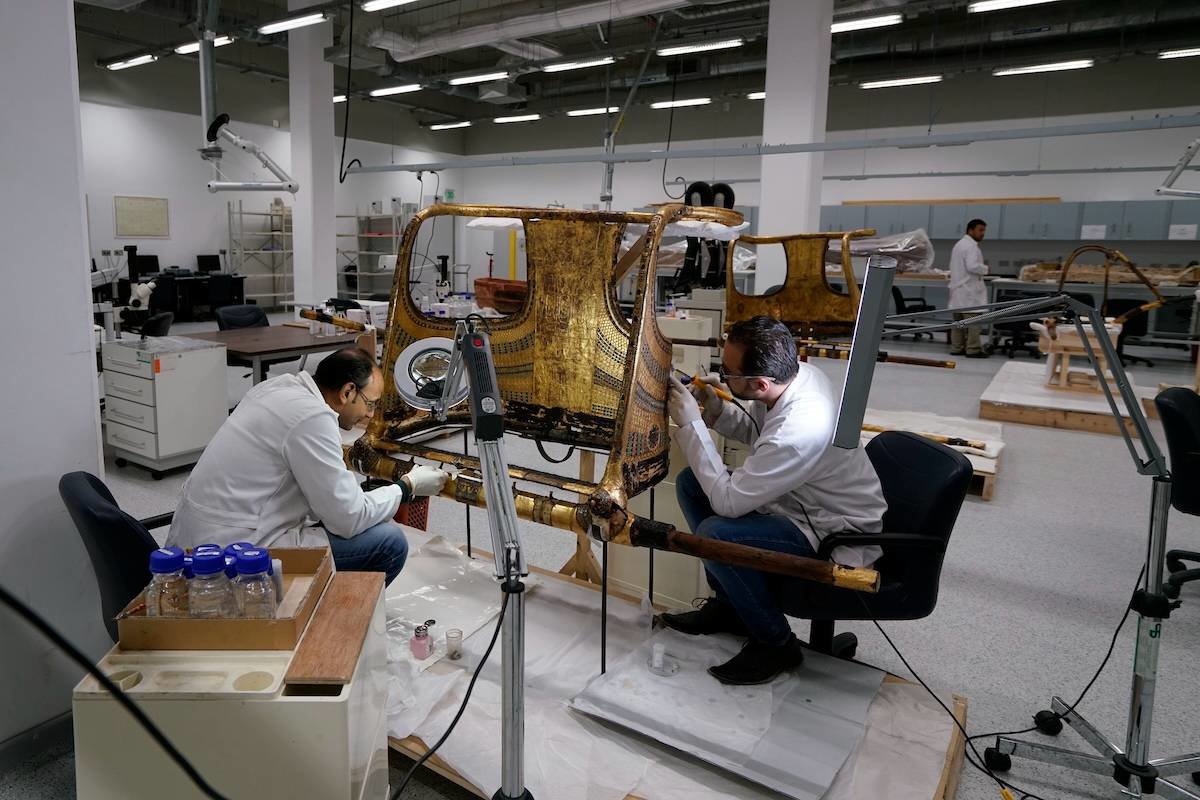
Historians don’t just work with what we know—they also consider how and why we know it. The GEM masterfully incorporates methodology into its surveys of Egyptian history through a large on-site conservation and research campus.
Inside the GEM Conservation Laboratory are 17 specialized labs focused on papyrus, textiles, wood, stone, metals, wall paintings, and human remains, as well as imaging and preventive care. Parts of the lab are designed with glass walls so visitors can watch conservators at work on artifacts, including King Tut’s treasures and the Solar Boat of Khufu.
A Museum Aligned to the Pyramids
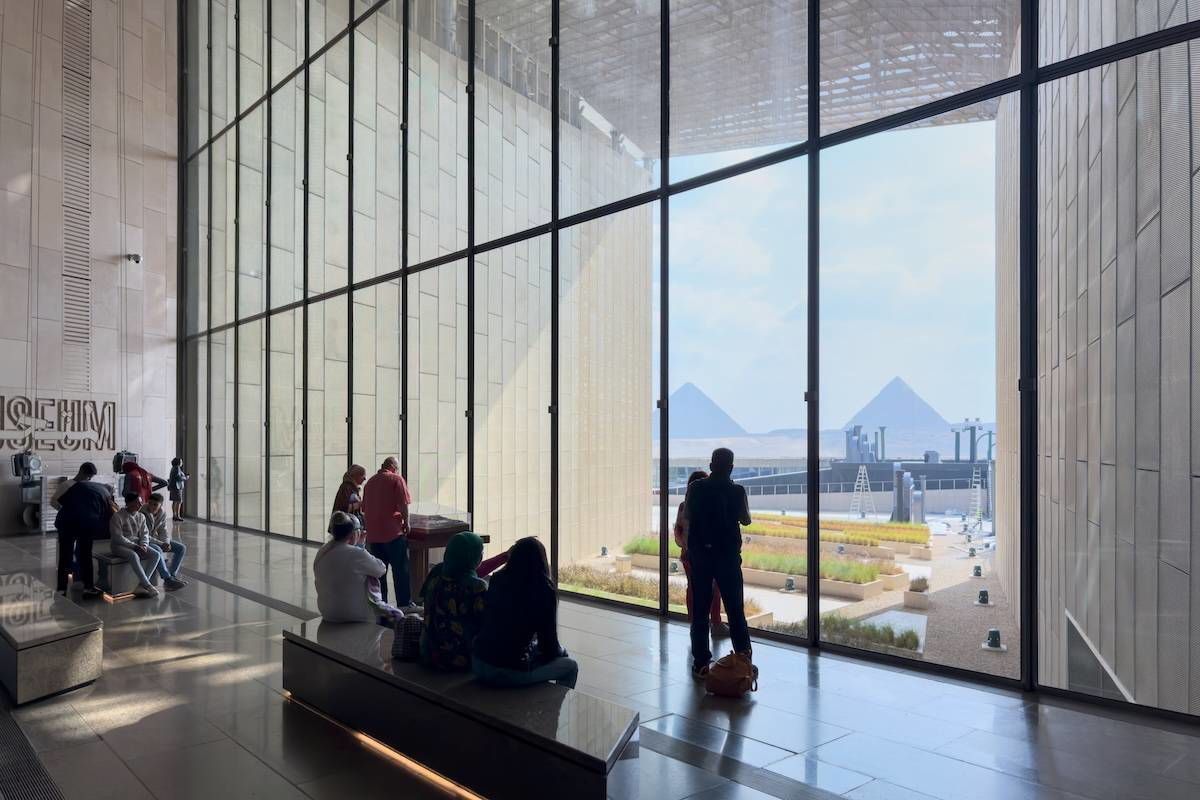
Designed by Heneghan Peng Architects, the GEM is in direct conversation with the Giza Plateau on which it sits. A visual axis at the entrance aligns with the Pyramids of Giza. Interior walls fan along this line, and the roof slopes to stay below the Great Pyramid’s height, keeping the landscape in view as visitors read the objects.
Because much of the collection is stone, strategic daylighting, and the structure’s concrete thermal mass stabilizes conditions across vast interiors. Beyond the walls, West 8 gardens extend the campus as public green space, echoing the Nile valley’s greenery. The result is a museum space that teaches you to read artifacts in the context of their world.
How the Grand Egyptian Museum Changes the Way We Do History
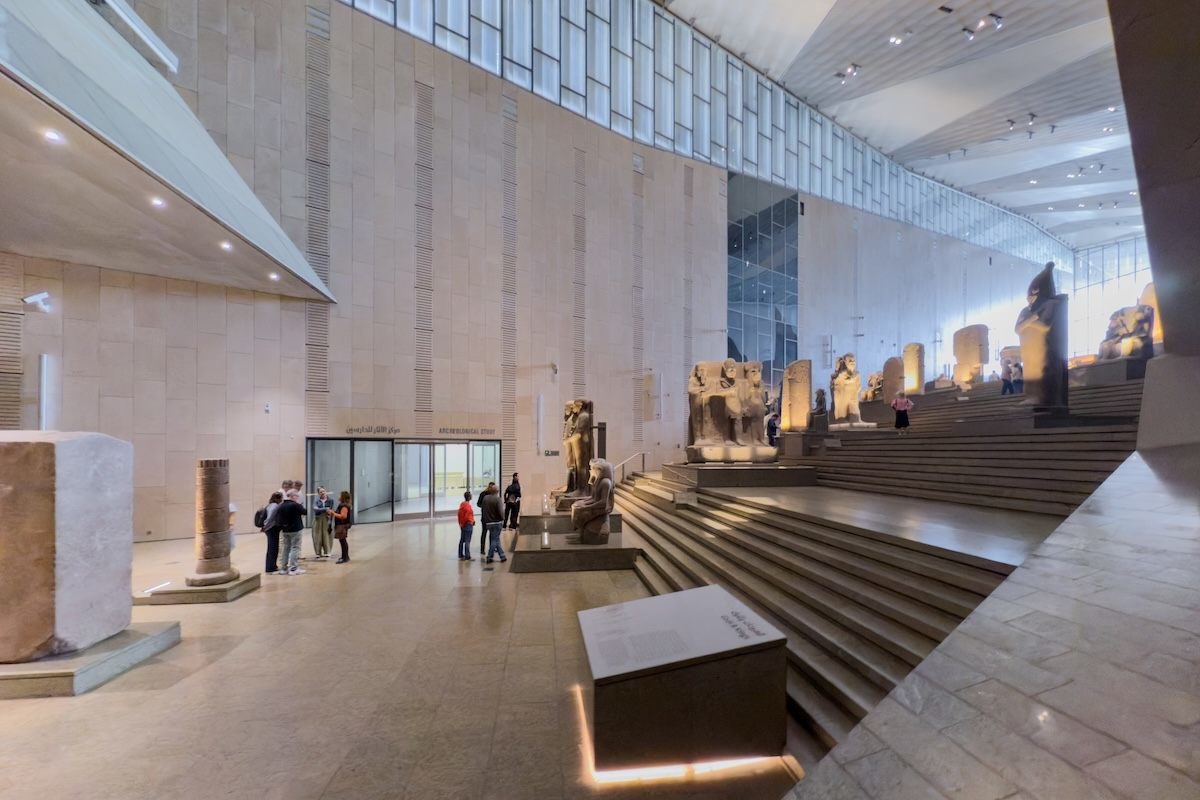
- See big patterns fast: At GEM, 5,000 years and 100,000+ artifacts on one campus make trends and exceptions visible in a single circuit.
- Read objects in context: Galleries and sightlines align artifacts with the Giza plateau and ritual practice, not just display cases.
- Watch the methods: Conservation, imaging, and documentation happen in view, so historians can see how claims are built.
- Compare across regions: Themes like Society, Kingship, and Belief let you test ideas against Mediterranean, Near Eastern, and African histories.
- Ready for teaching: The full Tutankhamun set, clear chronology, and intuitive wayfinding drop straight into seminars and survey courses.
